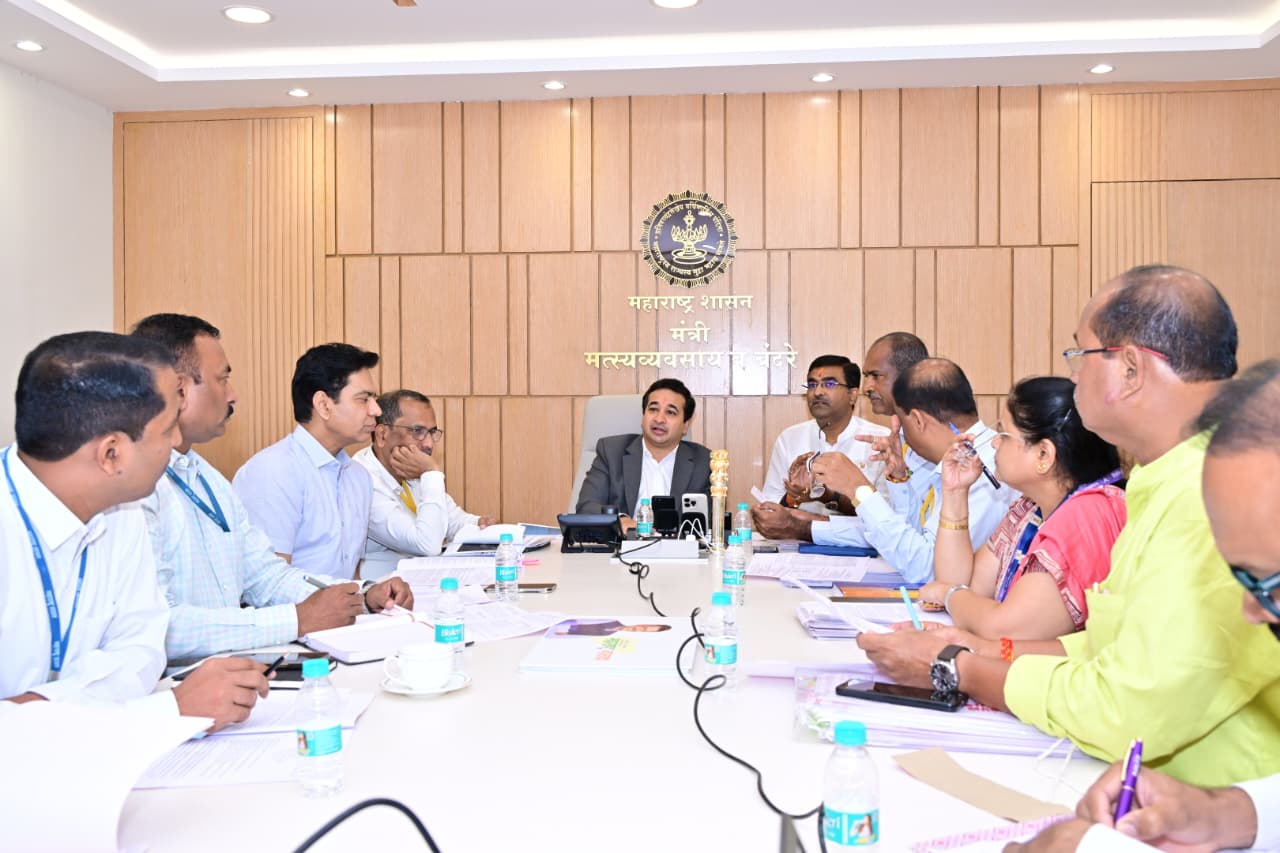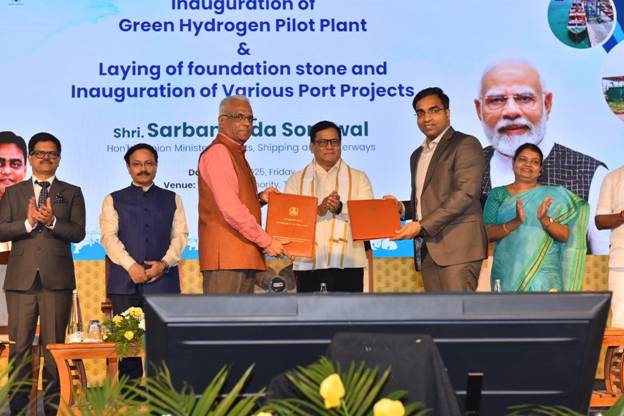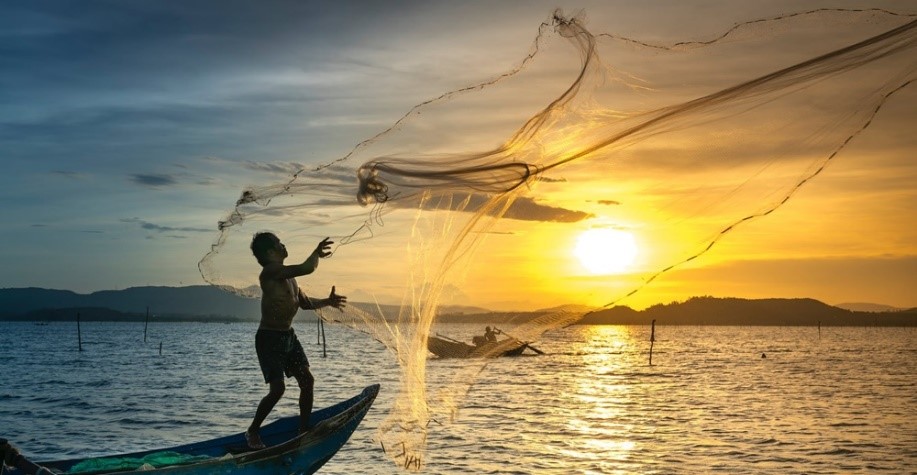Mukhyamantri Matsya Sampada Yojana aims for a Republic Day rollout. The real question: will it protect livelihoods, not just infrastructure?
Maritime News, Mumbai, Maharashtra, India: On a crisp November morning at Mantralaya, Maharashtra’s Fisheries & Ports Minister Nitesh Rane set a tight deadline: draft the implementation blueprint for the Mukhyamantri Matsya Sampada Yojana so the scheme can be launched by 26 January 2026. The plan — which promises upgraded landing centres, cold chains, processing units, new marketing initiatives and legalisation of select inland fisheries — is being fast-tracked with district-level action plans and finance-clearance timelines.
If delivered well, the scheme could be transformational. If bungled, it risks repeating an old script: big budgets; patchy inclusion; harm to small-scale fishers whose lives are woven into the coastline.
Why Maharashtra matters — the numbers
Maharashtra’s coast is long and busy. The state’s coastline stretches roughly 720 km, covering the coastal districts of Thane, Raigad, Greater Mumbai, Ratnagiri and Sindhudurg, where fishing communities have sustained local economies for generations. (Iomenvis)
India’s marine landings dropped slightly in 2024 — a reminder of climate and resource pressures — with total national landings of 3.47 million tonnes that year. Yet Maharashtra bucked the national decline: CMFRI data and subsequent press coverage reported a 47% surge in Maharashtra’s marine fish production in 2024, driven largely by higher catches of shrimp and cephalopods and mechanised fishing activity in certain districts. (Press Information Bureau)
At the same time, Maharashtra’s 2023 state landings were recorded at about 2.11 lakh tonnes (211,010 tonnes), indicating the state’s significance in India’s marine ecology and economy. (cmfri.org.in)
On the trade front, India’s seafood exports remain a major foreign-exchange earner — holding firm at roughly $7.45 billion in FY 2024–25 — underscoring how coastal livelihoods tie into national balance-of-payments and rural incomes. (The New Indian Express)
What the new scheme proposes
According to the state announcement, the Mukhyamantri Matsya Sampada Yojana will prioritise:
- Upgrading small fishing harbours and landing facilities (including Sassoon Dock upgrades discussed in earlier state-level talks).
- Expansion of cold chain and ice plants, reducing post-harvest losses.
- Financial support for fish processing, value-addition and marketplaces to strengthen returns to fishers.
- Legalisation of certain inland fisheries (forest ponds), after environmental clearances, to boost local jobs.
- District-level action plans, and coordination with the finance department to secure and release funds.
Minister Rane framed the plan as a “mile-stone” to raise incomes and modernise Maharashtra’s fisheries, and directed officials to finalise beneficiary selection, funding and operational details ahead of the January launch.
Who benefits — and who could be pushed to the margins
Potential beneficiaries
- Coastal smallholders and fishers who gain improved access to cold storage and market linkages, enabling them to get better prices and reduce spoilage.
- Processing units and exporters that can plug into upgraded infrastructure to boost quality and earnings.
- Women’s groups and fish-worker cooperatives who can be channelled into value-added roles — sorting, cold-storage management, and retail.
- Inland and coastal communities that receive legal recognition for managed inland fishing (if safeguards are in place).
At-risk groups
- Traditional small-scale fishers (non-motorised and artisanal) — unless the scheme’s funds and benefits are deliberately ring-fenced for them, they risk being outcompeted by mechanised trawlers and large buyers.
- Communities facing displacement from port expansion, tourism or industrial reclamation — projects that often arrive dressed as development.
- Local vendors and micro-entrepreneurs who lack access to credit or formal procurement channels — unless the scheme includes microfinance and capacity-building.
A recurring fear among coastal communities: modernisation without inclusion. They point to past instances where harbour upgrades and new terminals favoured corporate supply chains rather than hand-to-mouth fish vendors and those who traditionally rely on daily landings for income.
Risks and red flags: environment, data and corporate capture
Ecology and sustainability. Increased mechanisation and expansion without fisheries management can deplete near-shore stocks. Maharashtra’s recent spike in landings must be read alongside sustainability metrics; isolated gains can mask local overfishing or ecosystem stress. National declines in 2024 indicate fragility in the marine resource base. (Press Information Bureau)
Data and digital danger. The National Marine Fisheries Census (and any state-level digital beneficiary registries) promises better targeting. But several civil-society groups warn of data misuse: if household-level data about landed catches, vessel IDs, or GPS coordinates leak to private contractors or development investors, communities could lose bargaining power or face coercive buyouts of coastal land. The state must publish explicit data-governance safeguards — who owns the data, retention periods, access-control, and guarantees against sharing with private corporations.
Corporate concentration. There’s an unavoidable tension: big processors and port-linked cluster projects can deliver economies of scale — but without safeguards, they can also corner coastal procurement, coerce prices down and squeeze artisanal fishers. The Vadhvan and other mega-port ambitions make this an urgent political economy question for Maharashtra.
What government must do — a checklist for January and beyond
- Ring-fence funds for small-scale fishers. Allocate a distinct tranche for artisanal fishers and women’s cooperatives, with simplified procedures and on-ground facilitators.
- Public, auditable selection criteria. Be transparent about beneficiary lists and grievance redressal — publish district-level rosters and allow community verification.
- Data protection charter. Legally bind any census/registry data: government-only custody, strong encryption, no sharing with private firms without informed consent and parliamentary oversight.
- Sustainability mandates. Tie finance disbursements to sustainable fishing practices — seasonal closures, gear regulation, and community-monitored no-take zones.
- Climate-proof infrastructure. Build landing centres and cold chains to withstand cyclones and sea-level stress.
- Livelihood plus transition support. Offer training, seed grants and job-linkages to help fishers diversify into aquaculture, processing and port-related green jobs without forced displacement.
- Local voice in planning. Institutionalise fisher representation on district maritime planning boards and in environmental appraisals.
The bottom line
Maharashtra’s push to modernise fisheries is timely — the sector is central to livelihoods, nutrition, exports and coastal culture. Yet the state’s challenge is classic: convert a techno-infrastructure promise into durable, just livelihoods. The Mukhyamantri Matsya Sampada Yojana’s success will not be measured by the number of cold rooms built, but by how many fishing families sleep with greater security on Republic Day 2026 — not displaced, not indebted, and better paid.
If the blueprint delivered to the minister in the coming weeks includes legally-binding safeguards for fishers, clear data protocols, and a fast, transparent grievance-mapping system, the scheme can be a model for an inclusive blue economy. If not, it risks becoming another well-funded plan that lingers on paper while shores and small lives bear the cost.




